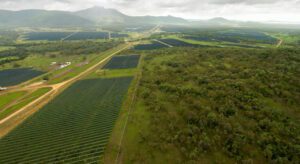Another week, another model illustrating how communities, and entire countries, can meet 100 per cent of their energy needs using renewable energy. This week, our friends at Greentech Media brought our attention to some new calculations by Stanford professor Mark Jacobson, projecting that, by 2050, 100 per cent of US energy demand could be met by onshore and offshore wind, utility-scale and rooftop PV, concentrated solar power, geothermal, wave, tidal and conventional hydropower.
According to The Solutions Project study, this would only be achievable if all new generation came from “the wind, water and sunlight” (WWS) energy technologies by 2020. WWS would then need to replace at least 80 per cent of existing energy by 2030 for the US to reach 100 per cent renewables by 2050. Interestingly, the plan also eliminates nuclear energy due to energy intensity and project time frames. In his analysis, Jacobson notes that the fossil fuels used to extract and refine uranium nine to 25 times the amount used by wind energy per unit of energy produced, while a nuclear plant can take between 10-19 years to get into operation, compared to WWS projects, which take two to five years.
As Greentech media notes, the study recommends a different resource mix for each US state, which can compared using the interactive US map created for the report. Below is the blueprint for California.
Source: Another blueprint for 100% renewables by mid-century









